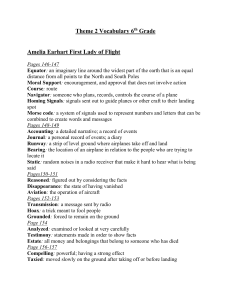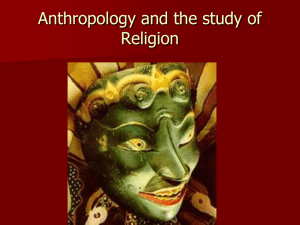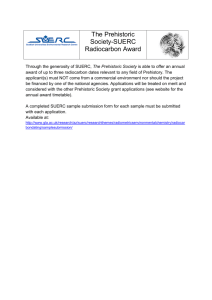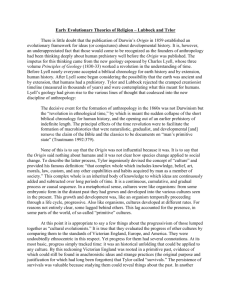Animism
advertisement
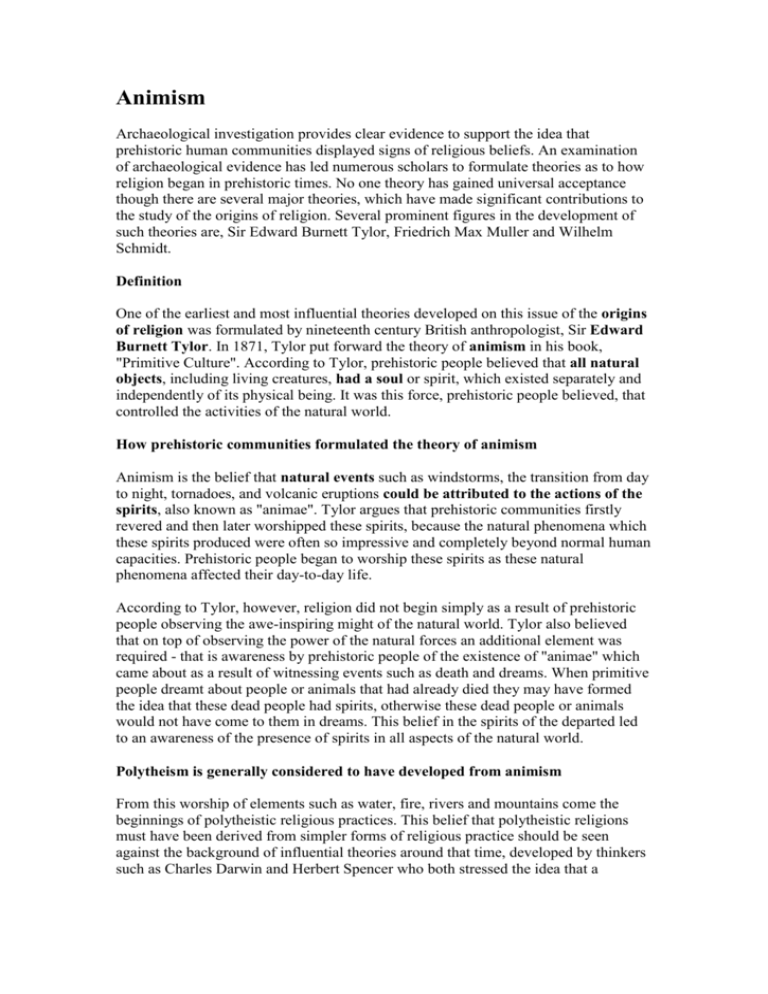
Animism Archaeological investigation provides clear evidence to support the idea that prehistoric human communities displayed signs of religious beliefs. An examination of archaeological evidence has led numerous scholars to formulate theories as to how religion began in prehistoric times. No one theory has gained universal acceptance though there are several major theories, which have made significant contributions to the study of the origins of religion. Several prominent figures in the development of such theories are, Sir Edward Burnett Tylor, Friedrich Max Muller and Wilhelm Schmidt. Definition One of the earliest and most influential theories developed on this issue of the origins of religion was formulated by nineteenth century British anthropologist, Sir Edward Burnett Tylor. In 1871, Tylor put forward the theory of animism in his book, "Primitive Culture". According to Tylor, prehistoric people believed that all natural objects, including living creatures, had a soul or spirit, which existed separately and independently of its physical being. It was this force, prehistoric people believed, that controlled the activities of the natural world. How prehistoric communities formulated the theory of animism Animism is the belief that natural events such as windstorms, the transition from day to night, tornadoes, and volcanic eruptions could be attributed to the actions of the spirits, also known as "animae". Tylor argues that prehistoric communities firstly revered and then later worshipped these spirits, because the natural phenomena which these spirits produced were often so impressive and completely beyond normal human capacities. Prehistoric people began to worship these spirits as these natural phenomena affected their day-to-day life. According to Tylor, however, religion did not begin simply as a result of prehistoric people observing the awe-inspiring might of the natural world. Tylor also believed that on top of observing the power of the natural forces an additional element was required - that is awareness by prehistoric people of the existence of "animae" which came about as a result of witnessing events such as death and dreams. When primitive people dreamt about people or animals that had already died they may have formed the idea that these dead people had spirits, otherwise these dead people or animals would not have come to them in dreams. This belief in the spirits of the departed led to an awareness of the presence of spirits in all aspects of the natural world. Polytheism is generally considered to have developed from animism From this worship of elements such as water, fire, rivers and mountains come the beginnings of polytheistic religious practices. This belief that polytheistic religions must have been derived from simpler forms of religious practice should be seen against the background of influential theories around that time, developed by thinkers such as Charles Darwin and Herbert Spencer who both stressed the idea that a complex society developed from a simple one. Thus evolution is characterised by the transition from the basic to the sophisticated. Implications of the belief in animism The belief that all living things have souls or spirits has a number of implications. Firstly, all facets of the natural world, from the inanimate elemental forces of nature to the animate flora and fauna, were considered as being more or less of equal importance. This is because everything was perceived as being endowed with a spirit or soul. Therefore, it was important for human beings to treat animals with respect. Not only were human beings seen as being of equal importance to all other soul carrying agents, they were seen as an integral part of this natural world. This concept of the world and of the role in which human beings play, is diametrically opposed to the modern perception of the world which is characterised by a Cartesian belief in the superiority of human beings who are separate and independent from the natural world. Secondly, prehistoric hunter-gatherer communities believed that the spirit, or supernatural being, that inhabits both animate and inanimate agents, survives physical death. Precisely what prehistoric people believed would happen to a soul or spirit after physical death is unclear. In some cultures it is believed that this soul moves unto a better world, a world of fertile vegetation, easy game, and abundant crops. Other cultures held the belief that these souls must transmigrate to a spirit world or else risks becoming a wandering ghost. Alternatively, other prehistoric communities believed that because the soul lives on even after the death of the physical agent inhabited by the soul. The soul continues to play an active role amongst the living. Thus, rituals are undertaken to appease these wandering spirits. Such rituals are intended to ensure the abundance of food, provision of shelter and overall wellbeing. They are also intended to help stave off the activities of evil spirits. Shamans, who are priests that possess great spiritual powers, undertake these rituals in animistic cultures. Most scholars have rejected the theory of animism Although Tylor's theories are not universally accepted they were, nevertheless, highly influential during his time and continue to influence the work of modern scholars. The controversial nature of Tylor's theories encouraged other historians and anthropologists to develop alternate theories to account for the origins of religion. Muller's alternative to the theory of animism One such academic was nineteenth century German scholar, Friedrich Max Muller, who is also famously known as the first historian of religion. Muller agreed with Tylor insofar as accepting Tylor's idea that religion began as spirit worship. However, Muller discounts Tylor's notion that such spirits inhabited the natural world. Instead Muller has argued for the view that these souls were anthropomorphic spirits in the sense that these spirits were endowed with human emotions such as anger and hence had good or bad tempers. It was these spirits, Muller argues, that became to be revered as deities. Animism is still prevalent in some cultures today While animism is often associated with prehistoric or preliterate communities it is, however, still a predominant feature of some communities and cultures today. For example, the traditional religion and spirituality of Australian Aboriginal people has animistic features as does the traditional religions of Melanesian, Polynesian and Micronesian communities of the Oceanic region. There are also features of animism found among African communities as well as the beliefs of the Native American Indians.




